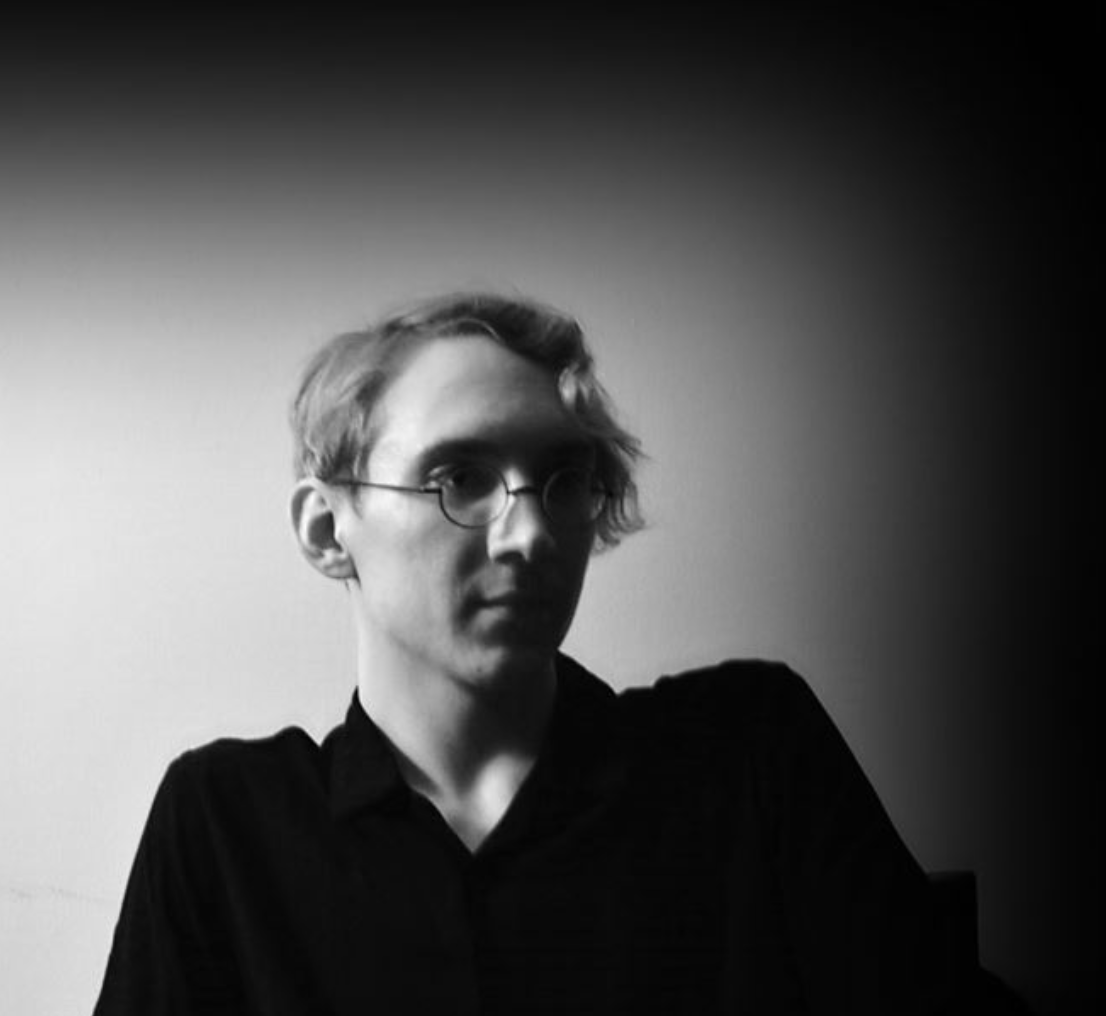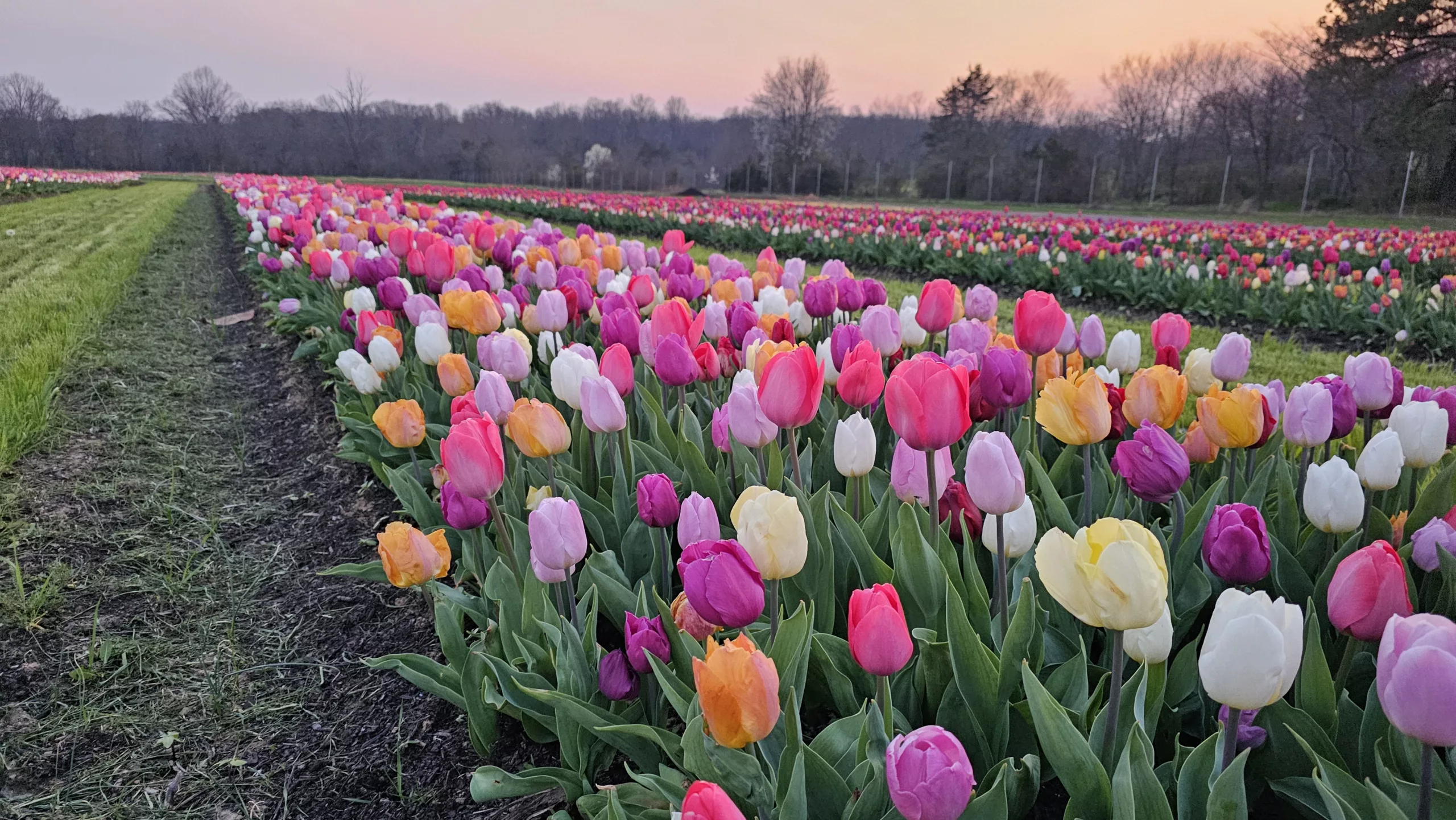We interview artist Suzanna Fields about her newest exhibit at the Quirk Gallery in Charlottesville.

“Constant Anomalies” runs until April 16 and shows an artist playing with organic and artificial landscapes. Taking inspiration from Rockfish Gap and the Blue Ridge in general, she makes beautifully strange art that is almost hallucinogenic. It’s as if a colorful mildew and the frost-kissed surface of a river collided. See the wonder for yourself at the Quirk Gallery, Charlottesville.
Konstantin Rega: You were born in Abington. So do you find yourself being inspired by the landscape?
Suzanna Fields: Absolutely, you know, being from Appalachia really defines a lot of my work. And it’s something that my dad loves; we both love water and being outside. But it’s funny, when I was younger, I just wanted to get out of there and do my own thing. Now, though, Appalachian music and culture has become important to me—like we all come full circle as we get older. The Appalachian culture kind of seeped into my love of nature, kind of seeped into me that way.
So, when you were younger, did you go explore the outdoors?

We lived a little bit outside of town. And there’s a view of White Top mountain, you know, which is the highest point in Virginia. And I went fishing with my dad all the time. I mean, I have a lot of mental images of just being outside all the time—with our pets and other people’s pets—and riding on my neighbor’s horse.
I think Picasso has a great quote about how most artists spend a lot of their lives trying to make a drawing like they made when they were kids.
We go do a lot of hiking, when we can, but my version of hiking may be different from other people’s. Like, sometimes my spouse and I have “a negotiation.” So, I think this is a nature walk—I’m down on the ground, looking at this little teeny tiny moss with my phone zoomed in—and he’s off down the trail.
I’m really interested in unseen things, or overlooked things, really. Organisms are really defining so much of our lives—like via the pandemic. I like to think about processes and systems that are kind of going on around us that we don’t think about a lot—until they get disrupted and just how precarious they are.
So as you were growing up, did you want to “be an artist”?
So, I was not an artist at all growing up. I think I was creative, but I wasn’t recognized as, you know, an artsy kid or whatever. We did tons of crafts. My mom is a very talented self-taught crafter and her favorite medium now is beading, and we’re actually going to have a pop-up show of my mom’s beaded jewelry in March/April.
So we were just a very crafty family, but my sister was the artsy one and I was the bookworm. I was an English major in undergrad and thought I was going to maybe go into journalism or some kind of writing position or profession. And then when I was a junior, I fell in love with art history because I took a class as an elective at Mary Baldwin with this fantastic teacher who I still talk to. She actually emailed me last week about my show.
But I loved art history, I’d never had any of that growing up. And, in fact, I’d never even taken an art class growing up—because, again, I was the bookworm. But as a requirement, I went to Oxford for a study abroad program between my sophomore and junior years. And I wanted to look at art all the time, just because of that one class. So when I came back, I said, “I’m gonna double major in art history and English.”
There’s a lot of narrative in my work. And my dad’s a good storyteller and there are a lot of good Appalachian storytellers around me. So I love having all that liberal arts mixture, even though I was terrified when I went to grad school—because I feel like everyone else could paint better than me, but it’s a long game. Sooner or later it evens out.
Did you start out painting these types of abstract nature pieces? Or when do you think you came to that style?
In graduate school, I was making realistic figure paintings, as you tend to do, because I was trying to teach myself more about art and learning how to paint and how to draw. But my figure paintings kept getting more and more abstract. I think I felt like I needed to find an authentic true voice for me. And so I made just zillions of abstract paintings that kept getting looser; they were more moody and more psychological. And then they became more formal. I remember when we had our candidacy show, and I just had like 50, these repetitive figure paintings and one of the professors was like, “Well, you get the award for the most stuff.” And I was like: that was not a compliment.
After that, I kind of looked back towards craft and what my mom did, and I took a graduate-level embroidery class, and by the end, I sort of started to give myself permission to play with different materials. So I started making paintings with lipstick, with candy. And the candy paintings kind of hit the nerve.
So I made it with Dots. And that felt to me more playful and I connected to it as a different way for me to think of abstraction. My mom would eat candy in her craft room, which was the biggest room in our house, and we would go steal her candy. And I was thinking about those memories. And so that was a eureka moment. I make abstract work, but it has to have a personal connection, and maybe not one that is conveyed immediately. But the general idea, you know, I think is often conveyed, and that works for me.
So the idea of being playful and then the memories came together in my work. Sometimes there’s also a sense of the grotesque and kind of the wondrous. The strange parts of nature are way weirder than anything in a horror or sci-fi film. To get to that eureka moment, it takes a while, took me like a year or so. But this is how I can make my own voice and abstracts based on these experiences and playing with materials.
If your work is so personal and playful, do you worry that audiences won’t be able to connect with them?
No. I think one thing that’s important to me is that the work has lots of entry points. And I’m really interested in design in nature. What is very fascinating to me is the idea that there are so many things that can elicit so many small associations from so many people.
You can look at my work and people will tell me all kinds of things. I love hearing what they have to bring to it. I love that it creates this kind of dialogue. For some, it’s kind of like a micro image, and for others like a macro one. But it’s the same painting! One person told me it looked like a petri dish under a microscope. There are so many connections that can be made between forms, and most people are very sophisticated viewers. We’re constantly looking at things and taking them in.
I think sometimes contemporary art—even though I have a lot of love for it—can make people feel very on the outside, or people feel excluded from it. And I’m really happy when the work can have this dialogue with people who may not be in the art world, and then also people in the art world, and that’s kind of a balancing act. And even a lot of kids respond to my work.
So it has this kind of narrative quality, and there’s a sense of systems that are kind of barely held together, too. So you feel like something is teetering or about to go or about to disintegrate? Or is it building up?
And one thing that really made me feel fantastic with this work in particular: Every time I’m in the gallery, there are people getting close and looking. I feel honored that they’re doing that because we are all super overwhelmed and distracted. So when we can kind of stop and pay attention, that’s just amazing.
Can you talk about your current exhibit, about how it came together?

This work is, you know, some of it ranges from the last three years—because I’ve kind of been going through a little bit of a transition in my work. I have all these complex processes I use. So, I use this ink and then something to separate the ink and that gives me these poles, kind of Mandelas or the kind of laces, these circular forms that have all these intricate patterns in them. And then at the very edges of that pool, I add paint and the paint etches into these translucent forms and it creates all these quarreling patterns.
And I’ve really been developing that process for a few years, kind of honing it. So when I make those pieces, I have to work on them kind of all at once and it takes me a couple of hours to do a couple. I actually put a plastic “terrarium” overtop of it to control the humidity. I even have a humidity sensor. So I have to really control that. I’ll continue to work on it, building it and pulling out the color and trying to make sure that they pop and getting what I need to happen. And then I’ll check on it four or five throughout the day to make sure it’s curing the way I like.
These last couple of years, I’m starting to really understand how my work pays homage to the processes that I see in the natural world. Like, I love when I do the same hike several times and it’ll be completely different in March, April, June.
Some of the newer work is kind of looking at the structure, like underneath. It kind of has a lot more happening at the ground level or structure. But the overall structure stays very stable. And then there are all these things that are worn away, that change constantly.
So with that, I’m aligning myself and my work with those processes that I observe in nature. I’m not recreating them, but I’m paying homage to them. And so I’m thinking about this mix of the artificial and the organic. We have these stories about nature and then the actual world that we were trying to come to grips with—like, all the changes that are happening in the climate and all that.








